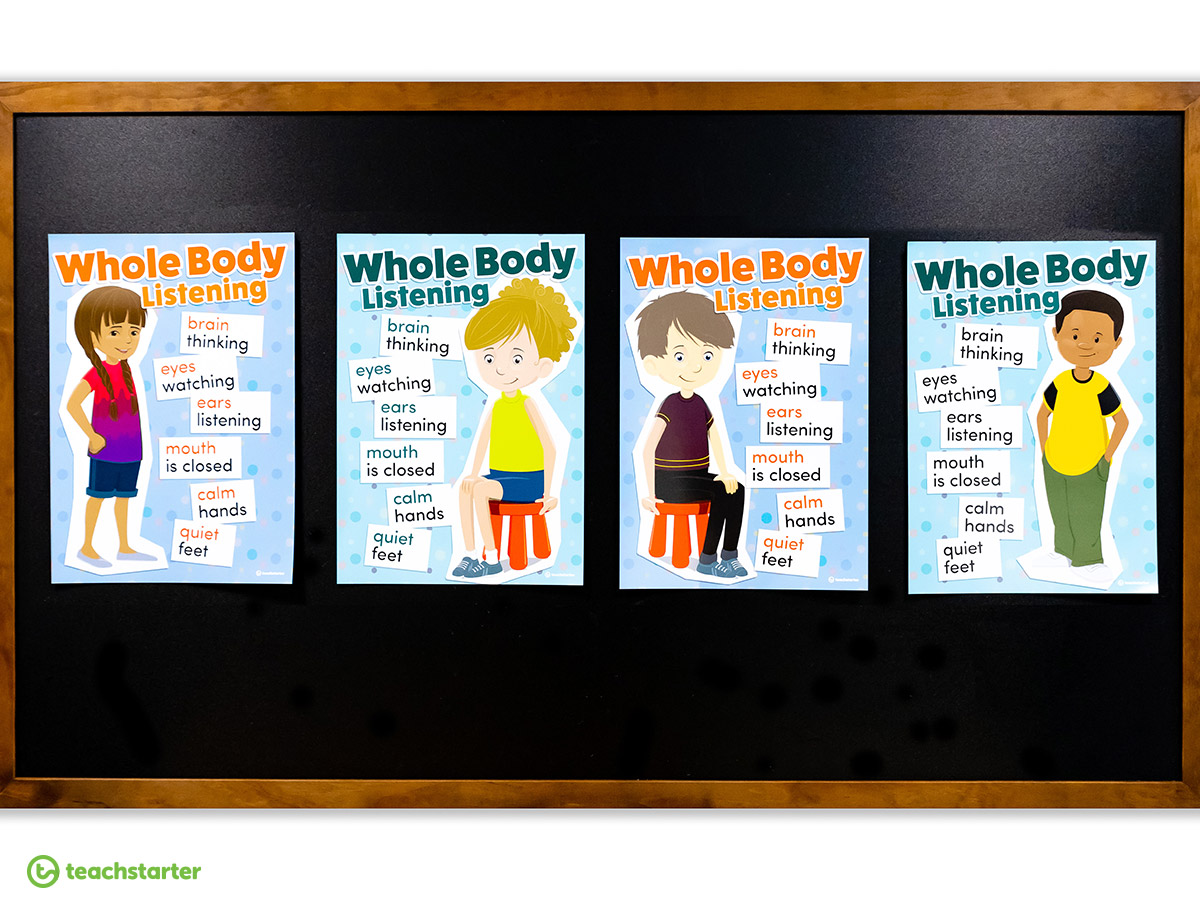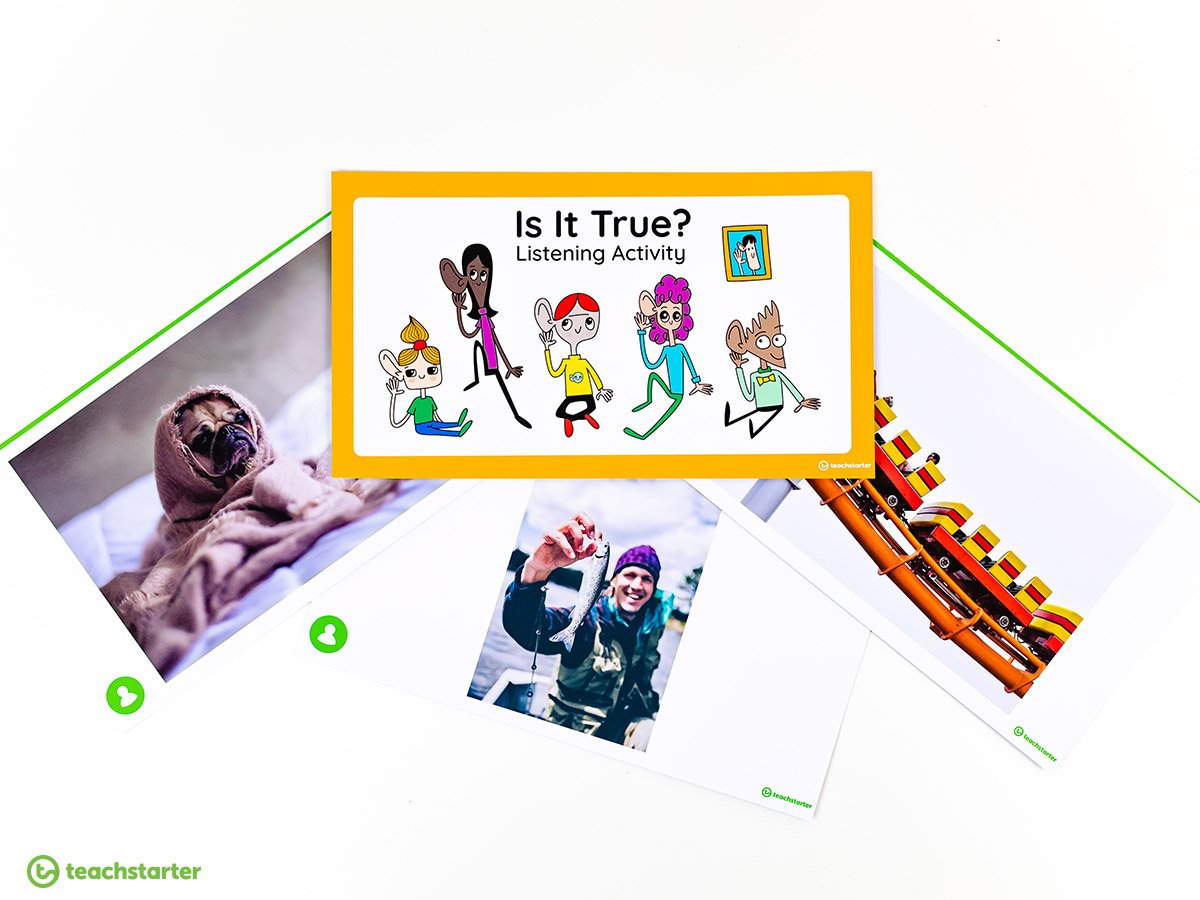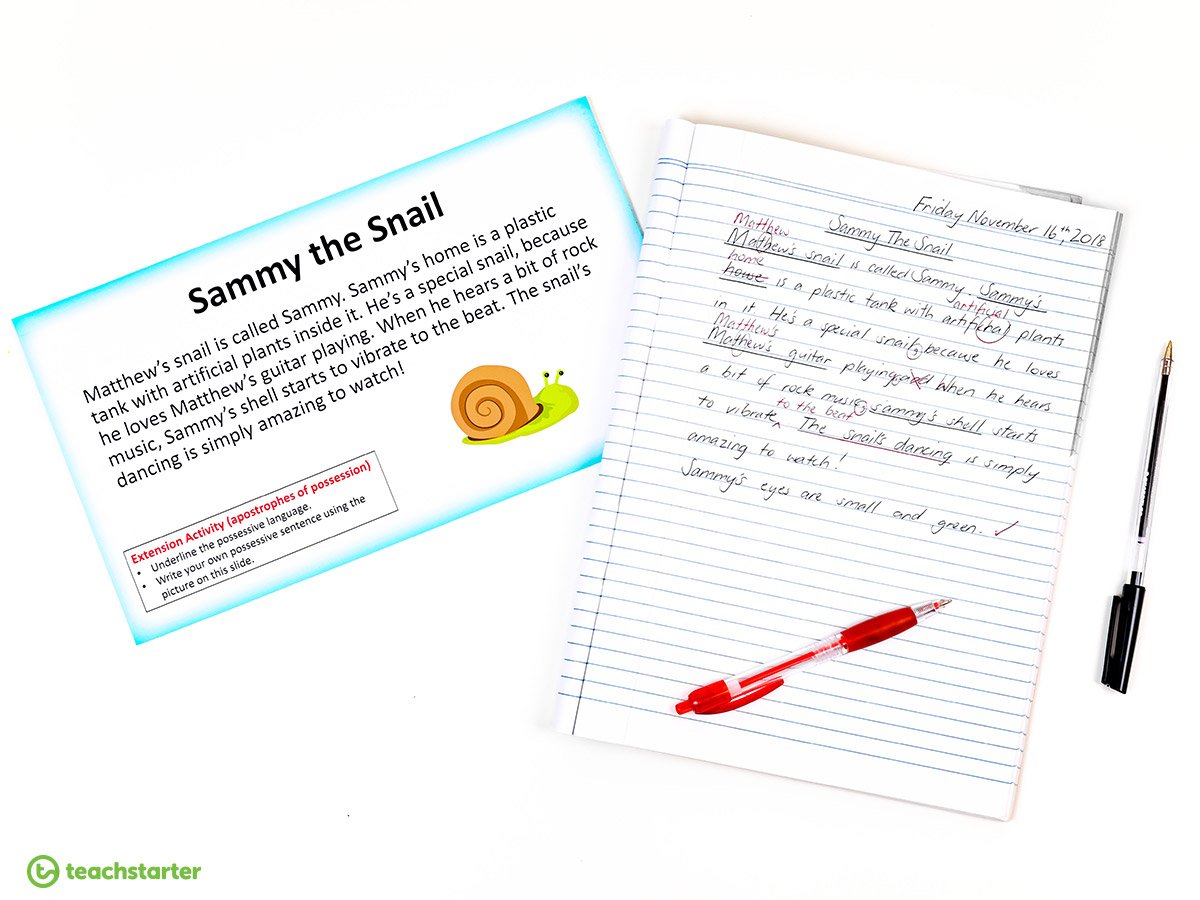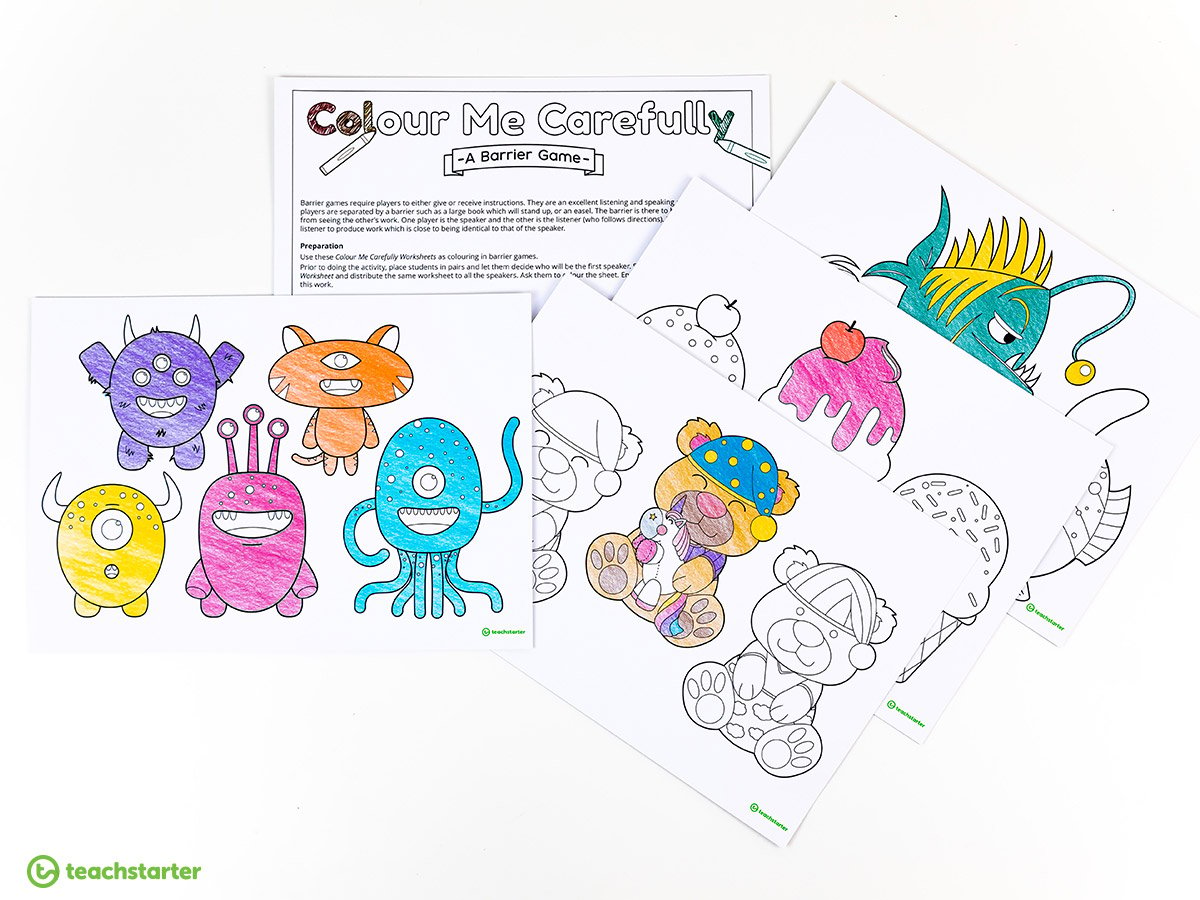If I’ve said it once, I’ve said it a thousand times – speaking and listening are skills that teachers can never model enough.
How does this sound… you’ve finally finished explaining, step by step and painfully explicitly, the instructions for an activity. You ask your students if anyone has any last questions and the inevitable hand rises.
You paste on your most patient smile and call on the child. You’re answered with a confused “So…what do we do again?”.
Sounds frustrating, doesn’t it?
If I had a dollar for every time I had to repeat myself as a teacher, I’d be a billionaire by now and off living the life on my own private island. Alas, all I received for my repetition was a headache and a slightly strange desire to own a dictaphone.

I have no doubt that my feelings are echoed in the hearts of thousands of teachers around the country.
So…what should we do? Should we grin and bear it? Or should we be proactive, making sure to teach our students the skills to listen and speak purposefully and well?
I vote for the latter, and I think you would too!
So, I’ve taken 10 of our best Teach Starter Speaking and Listening activities to help you do just that.
10 Activities to Teach the Skills of Speaking and Listening
You may think that listening and speaking are skills that you develop naturally, almost through osmosis. Unfortunately, that isn’t the case!
It’s just as important for teachers to teach and model the skills of speaking and listening, as it is for them to teach reading and arithmetic!
Speaking and Listening skills benefit students speech, language and communication skills and enable them to more proficiently focus on and process information.
#1 Set Some Speaking and Listening Goals
Get your students off on the right track by collaborating with them to set some Speaking and Listening Goals.
With goals specifically tailored to lower, middle and upper grades, your students will have clear direction on the skills they need to develop on their journey to becoming better listeners and speakers.
[resource:79914][resource:80623][resource:81229][resource:25767]
[resource:80658][resource:62850][resource:63016][resource:66938]
Print and cut out our Goal Labels – Speaking and Listening for targeted feedback during your marking!
Once students have reached their goals, they can proudly display our ‘I Can’ Statements – Speaking and Listening in their portfolios.
#2 Listen With Your Whole Body
If a mime were to imitate the act of listening, you would no doubt see their hand held up to an ear – this is universally recognised, and why shouldn’t it be? Listening occurs in your ears, doesn’t it?
Despite this common belief, most teachers will tell you that listening does not JUST happen in your ears – it’s a whole body experience!
Whole body listening engages the listener to give their complete attention to what is being said. Not only this, it shows the speaker that their audience is attentive and respectful.
Get the fundamentals of listening down pat and teach your students how a good listener behaves with our Whole Body Listening Posters.
#3 Play Listening Games
Games that require students to listen, wait and then react, or listen and make a decision are particularly good at targeting not only listening, but processing skills too.
These games can easily be incorporated into your morning routine!
Hurrah-Boo!
Ask your students to listen intently to statements you’re about to make.
If it’s a nice statement, they say hurrah! If it’s not so nice, they say boo.
“Everyone gets an ice cream!” – “HURRAH!”
“Lunchtime is cancelled.” – “BOO!”
I Say – Go!
Similar to Simon Says, ask your students to follow explicit instructions.
The catch is, they have to wait until you say “Go!” before they can carry out the instruction.
To increase the difficulty, leave a longer gap between the instruction and saying go!
The Telephone Game
This timeless classic needs little explanation.
Students sit in a circle and pass around a message by whispering in their neighbours ear.
When the final student is reached, they stand up and repeat the message they heard.
Compare it to the start and see how well the message got relayed from person to person!

I Went to the Shops…
This is a great game to challenge your students’ listening and memory skills.
One child starts off the shopping list by saying “I went to the shops today and bought…” something.
The next child continues by saying the previous item and adding their own item!
Continue around the class working through the alphabet and adding items to the list.
For older students, why not make the items topic specific, such as items you’ll find only in the rainforest?
Thumbs Up Thumbs Down
Read out a list of true or false statements. Students have to listen carefully and decide on the validity of the statement.
If it’s true, they give a thumbs up! If it’s false, a thumbs down.
“My hair is blue.” – thumbs down.
“Ms Stuart is the best teacher in the world!” – thumbs up (I can only hope!).
This game can be altered to suit older students – read out true and false statements about a curriculum topic you have been working on.
#4 Mix Visuals With Listening
Play the Is It True? Listening Activity with your students!
Students listen to the description read by the teacher while viewing an image. They decide whether the information is accurate or not.
This resource provides great exposure to descriptive vocabulary. Adjust the vocabulary to suit your students’ abilities!
#5 Drawing on Demand
Listening and art can go hand in hand too! Having your students complete this drawing on demand activity can be a great way to produce art for the classroom.
Read the description out to your students several times. They need to listen very carefully as they are required to draw what they hear.
[resource:3263][resource:5289][resource:5286][resource:5061]
Use the picture on the second page to see how close your students came to drawing the picture described.
#6 Write a Speech
Sometimes students have lots of lovely thoughts in their head, but when it comes to verbalising it, things get tricky.
Have students practise their oratory skills by using our Writing a Speech Poster.

Writing a speech doesn’t have to be boring. Encourage students to think outside the box!
How about a speech on their favourite animal, or a great movie they’ve seen?
#7 State Your Opinion
If your students struggle to express their point of view, this effective lesson on investigating point of view will get them on the right track.
For or Against? is the first lesson in a unit on our Developing Persuasive Writing Skills – Year 3 and Year 4. In it, the class watch a video retelling of the story I Wanna Iguana by .
After watching, you will have the opportunity to ask students to share their points of view about some everyday issues that they can relate to.
Encouraging the students to explain and justify their reasoning to the class is a great way to explore opinion and verbally expressing points of view.
#8 Speaking in Rhyme
Sometimes the problem isn’t the processing of speech, it’s the nerves that come along with it.
Use these Nutty Nursery Rhymes Speaking and Listening Activity cards as a fun, open-ended speaking or drama activities to build confidence. The emphasis is on being playful with language as students explore rhyming words.
The cards are designed for use in small groups! Print and laminate several sets of the cards so that each group can work on the same rhyme simultaneously.
Study the following rhymes with these cards:
- Humpty Dumpty
- Little Miss Muffet
- Hickory Dickory Dock
- Little Bo Peep
- It’s Raining, It’s Pouring
- Twinkle, Twinkle
- Five Little Ducks
- Baa, Baa, Black Sheep.
#9 Dictation Activities
It’s the age-old debate – is dictation really necessary in today’s classrooms?
Our blog Is Dictation Just an Old-Fashioned Teaching Strategy? outlines the meaning of dictation, and considers the ins and outs of using it as a tool in the classroom.
Love it or hate it, when it comes to the skills of speaking and listening, dictation is an easily assessable teaching strategy that can double as a tool for assessing literacy.
[resource:46807][resource:46815][resource:46842][resource:46828]
#10 Colour Me Carefully Collaboration
This Colour Me Carefully game is excellent for bringing the skills of speaking and listening together.
Your students can play this game in pairs, with the players separated by a barrier. There is a speaker and a listener. Prior to beginning the game, the speaker colours their sheet.
During the game, the speaker gives precise instructions to the listener who just listens carefully and colours accordingly!
The goal is for the listener to produce work which is close to being identical to that of the speaker. A good lesson in communication and teamwork!
But What if Students Need a Bit of Extra Help?
Sometimes the skills of speaking and listening don’t come so easily to students, due to developmental or processing difficulties.
At times like these, it can be increasingly frustrating for students to not be able to keep up with their classmates, and activities like the ones listed above can be incredibly stressful.
There are a number of strategies that you can use in your classroom to make the environment as accommodating for these students as possible:
- Reduce distractions – visual and auditory distractions can be incredibly annoying to students who have trouble listening or expressing themselves.
- Position yourself well – if you have a child with auditory processing or hearing impairment, it’s best to position yourself directly in front of him or her. This way they can see your mouth and gestures as you speak and hear you clearly.
- Capture attention before giving instructions – clapping to capture your students’ attention or speaking a child’s name out loud can help them be alerted that you will be giving them instructions. They can prepare themselves to listen with their whole bodies and give you their full attention.
- Provide visual support – sometimes, students with speaking delays or impediments can really benefit from having palm cards, posters or other methods of visual support. Accommodating them in this way can help them concentrate on speaking clearly and loudly without worrying about the content of what they’re saying.
- Consider the classroom layout – if you have a large classroom, then consider yourself lucky! Make good use of the space, however, by positioning your furniture and teaching zones sensibly. Don’t have students desks too far away from the board, and make sure students who have hearing or auditory processing difficulties get a position up the front.











Comments